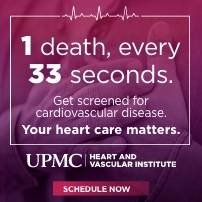December 2nd, 2022 by WCBC Radio
Despite the objections of many, aging is a part of life. As we get older our physical, visual and cognitive functions may decline. Yet for many drivers age 65 and older, having a driver’s license means independence and the ability to stay engaged in their community. The Maryland Department of Transportation Motor Vehicle Administration (MDOT MVA) is highlighting tips and resources as part of Older Driver Safety Awareness Week, December 5-9, to help those who are able to drive safely to continue to do so.
“We understand the desire to continue driving for as long as possible and we know aging occurs at different rates and times for each individual,” said MDOT MVA Administrator Chrissy Nizer, who also serves as Governor Larry Hogan’s Highway Safety Representative. “Being proactive about changes to our transportation needs as we age can ensure we’re safely navigating the roads. This includes understanding vehicle features and using them properly, maintaining safe driving skills, and learning ways to identify changes early.”
The Right Fit![]()
Staying safe on the road takes a multi-faceted approach that starts with the proper fit and understanding of the safety features within a vehicle. Today’s vehicles are equipped with many safety features that can be intimidating and difficult to understand. CarFit, created by the American Occupational Therapy Association (AOTA), the American Automobile Association (AAA) and AARP, is a program developed to address that, helping older drivers understand their vehicle and ensure they are correctly fitted.
A proper fit can increase a driver’s safety – for instance, sitting too close to the steering wheel, which houses the airbag, can cause serious injury and a good foot positioning is important. A driver reaching with his or her toes to press the pedals can cause fatigue leading to slow reaction times. Additionally, knowing how to properly adjust side mirrors can minimize blind spots while changing lanes.
MyCarDoesWhat?.org is another resource through the National Safety Council that educates drivers on the ever-changing world of car safety features, including Advanced Driver Assistance Systems. Things like adaptive cruise control, back up cameras and warnings, blind spot detection and brake assist are all features than can keep you safe on the road. In-vehicle display icons for these features can be confusing to drivers but the MyCarDoesWhat website provides pictures for each symbol and what technology it represents.
Common Crash Scenarios to Avoid
Understanding common crashes can help older drivers avoid such conditions. Common crashes among older drivers include turning left at an intersection with a stop sign or light with no dedicated left turn arrow, yielding ![]() or merging with traffic at high speeds or changing lanes on a roadway with four or more lanes. If you do encounter a high-risk situation, the MDOT MVA offers the following safe driving tips:
or merging with traffic at high speeds or changing lanes on a roadway with four or more lanes. If you do encounter a high-risk situation, the MDOT MVA offers the following safe driving tips:
- Always wear a seat belt and make sure all passengers in all seats are belted.
- Use caution when turning. Judging oncoming traffic can be challenging both at intersections and when making left-hand turns.
- Allow enough time when crossing traffic and pay attention to signs and signals.
- Use caution when merging onto higher speed roads and when changing lanes.
- Be extra careful at intersections. Use turn signals and stay alert for cars and pedestrians entering from the side.
- Always stay in your lane while driving through an intersection.
- Avoid distractions so you can make safe driving decisions.
- Drive at or near the speed limit. It’s unsafe to drive too fast or too slow.
- Be aware of the risks of drowsy driving from exhaustion, changes in medications or certain medical conditions. Drowsy driving can be just as dangerous as impaired driving.
Health Impacts & Actions
Vision, physical health, cognitive health and medications, regardless of your age, can have an impact on driving ability. Health issues can affect a person’s ability to recognize hazardous situations, react quickly to changing conditions and the ability to focus on more than one task – as usually required when driving.
If you or a loved one begins to recognize the warning signs for diminished driving capacity, have conversations with family, friends and your health care provider. Contact an occupational therapist or a driver rehabilitation specialist to get advice and to learn about other transportation options to stay mobile in the community. MDOT MVA produces a Resource Guide for Aging Drivers that provides detailed information and easy-to-use tools for customers to learn more about aging, health and driving. To download the guide, click here. Stay aware of changes on the roadways, and driving habits, by taking advantage of the many driver refresher courses and self-assessments available.
Older Driver Safety Week will be the focus of this month’s Conversation’s With Chrissy, a podcast recently launched by the MDOT MVA. Administrator Nizer talks with guests each month about ways the agency is better serving Marylanders through updated technology, partnerships, and services.




.jpeg)












